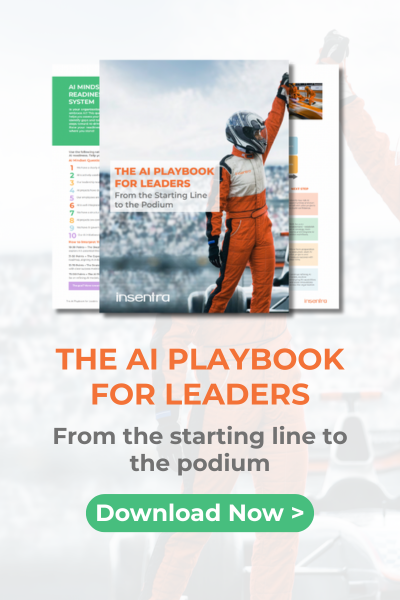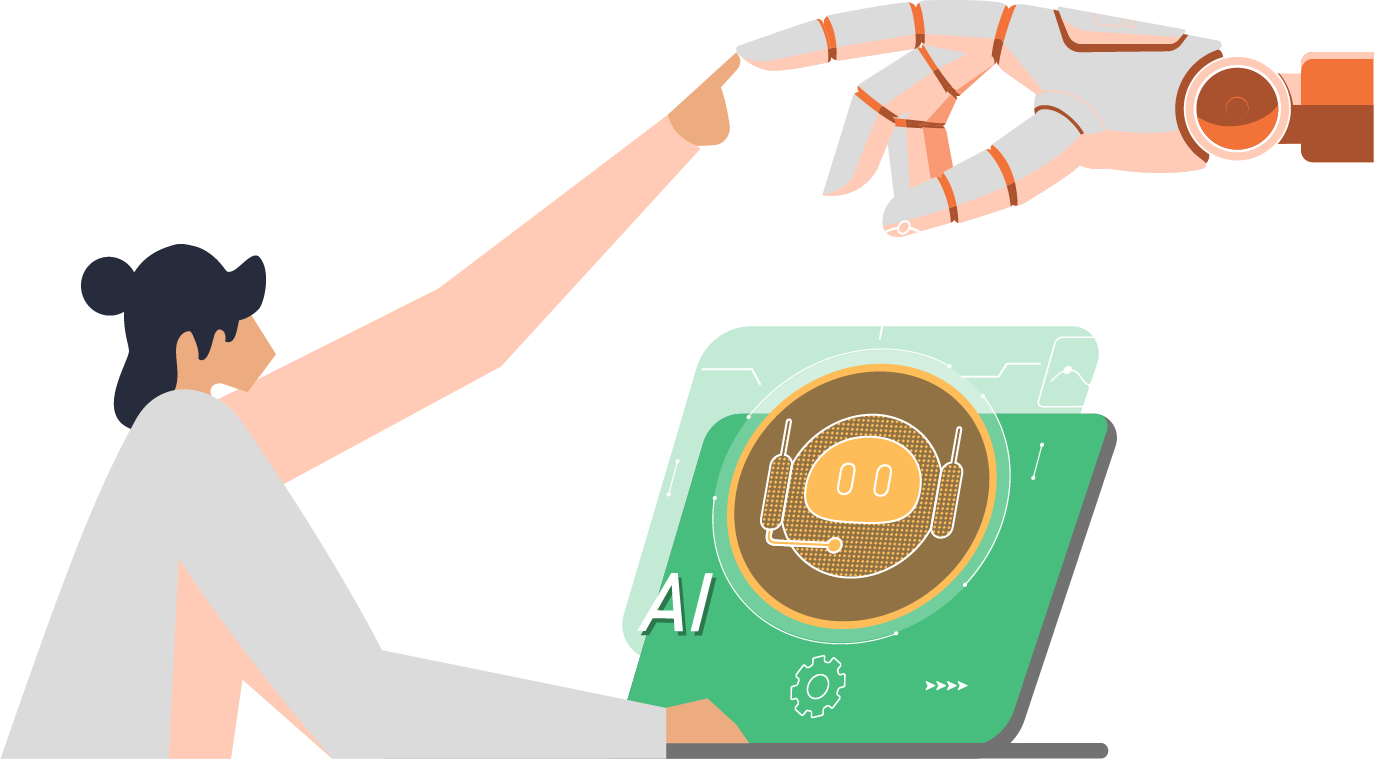“AI will change what we do. EI will determine how well we do it. The organisations that win won’t be the ones with the most models they’ll be the ones with leaders who can steward trust, meaning and change at scale.”
That opening isn’t merely rhetoric. It captures a profound shift taking place across boardrooms, shop floors and teams worldwide. As artificial intelligence matures from experimental novelty to operational necessity, something unexpected is emerging, the technical differences between organisations are compressing rapidly. What increasingly separates those who succeed from those who falter isn’t the sophistication of their algorithms but the quality of their human leadership.
The winners will be those who master what I call the “human glue” the capacity to sense emotional undercurrents, engage authentically with uncertainty, adapt to resistance, repair fractured trust and sustain organisational vitality through relentless change.
Yet here’s the uncomfortable truth, while leaders have wagered heavily on AI to boost efficiency, automate decision-making and turbocharge innovation, these ambitions frequently stumble and rarely is it because the technology failed. More often, it’s because we neglected the human side of the equation. The emotional, cultural and adoption dimensions that determine whether transformation takes root or withers.
Let me unpack why this matters now, what the data reveals, and how leaders can build a disciplined path forward that integrates emotional intelligence (EI) into every stage of their AI journey.
An Emotional Recession at the Worst Possible Time
We’re not just facing a skills gap or a digital divide. We’re experiencing what pundits call an “emotional recession”. A systemic erosion of human capacity precisely when we need it most.
The Numbers Tell a Stark Story
According to the State of the Heart 2024 report by Six Seconds EQ Network1, global emotional intelligence scores have declined by 5.5% since 2019, the sharpest drop recorded in over a decade. This isn’t a blip. The decline affects all eight core EI competencies measured, from self-awareness and emotional regulation to empathy and relationship management. Alongside this, wellbeing scores have fallen by approximately 5.3%.
Simultaneously, we’re witnessing what Gallup describes as the “Great Detachment” particularly in young worker where there is a growing trend where employees, feel emotionally and mentally disengaged from their jobs, often due to various workplace pressures and dissatisfaction.
Consider these findings from Gallup Research2:
- Roughly 60% of employees now describe themselves as emotionally detached from their roles
- Only 31% of U.S. employees report being engaged, the lowest level in a decade
- About 17% are actively disengaged, while approximately 50% feel detached from their organisations altogether
- Job satisfaction, connection to mission, and overall engagement are plummeting
This isn’t simply a morale issue. Detachment directly undermines innovation, retention, productivity, psychological safety and the collective energy required to navigate change. At the exact moment when organisations are asking people to embrace AI-driven transformation, their emotional reserves are depleted.
Why This Matters for Business Performance
Some might dismiss emotional intelligence as “soft” or secondary to harder commercial metrics. The evidence suggests otherwise.
Multiple meta-analyses demonstrate that EI correlates meaningfully with superior organisational outcomes. Research published in Frontiers in Psychology3 found that EI, across ability, trait and mixed models, positively correlates with job performance, job satisfaction and organisational commitment, while negatively correlating with stress. Another meta-analysis confirmed a robust relationship between EI and job performance across diverse studies.
Perhaps most strikingly, Six Seconds reports that individuals with above-average EI are 10 times more likely to excel in effectiveness, relationships, wellbeing, and overall quality of life. Research from Australian Institute of Management found that companies with high-EQ leadership teams were 25% more likely to outperform their competitors in terms of profitability and employee satisfaction. 4
The stakes have never been higher. Organisations are accelerating AI investments, automating workflows, and unlocking insights at unprecedented speed. Yet most AI initiatives don’t fail because of faulty code or infrastructure, they fail because the human dimension is neglected. Trust isn’t built. Culture is overlooked. People feel threatened, excluded, or bewildered. Models can be deployed, but meaning can’t processes can be optimised, but belonging cannot.
Emotional intelligence is no longer a “nice-to-have” but a hard-edged competitive advantage. Leaders who embed EI into their AI programmes ensure that technology accelerates performance rather than creating costly theatre. The gulf between organisations that deploy AI sustainably versus those that do so superficially will widen dramatically in the years ahead.
Why EI is Essential for AI Success
It builds trust in the tools. Empathic, transparent communication reduces fear and resistance, speeding adoption and minimising shadow workarounds. When people understand not just what AI does but why it matters and how it affects them, they become collaborators rather than saboteurs.
It improves decisions in ambiguity. Emotions are data. Leaders who surface and interpret emotional signals avoid the trap of “perfect on paper” decisions that collapse under social or cultural strain. AI may offer predictions, but humans navigate the messy, relational terrain where those predictions must be implemented.
It protects culture while rewiring workflows. Research from MIT Sloan confirms that AI success depends as much on culture and interpersonal dynamics as on model accuracy. Technology is adopted or rejected within human systems, and those systems run on trust, fairness and psychological safety.
It sustains performance under load. Transformation is exhausting. Meta-analyses consistently link EI to higher job performance, greater commitment and lower stress: precisely the qualities organisations need when asking people to work differently, think differently and risk differently.
The EI × AI Value Matrix: Where Does Your Organisation Sit?
To understand the interplay between emotional intelligence and artificial intelligence, consider this simple diagnostic framework:
| Low EI | High EI | |
| High AI | Technology theatre: models ship, adoption lags, trust erodes | Target state: rapid learning loops, safe experimentation, measurable value |
| Low AI | Paralysis: anxiety, AI pilots stall | Healthy culture, missed upside |
Most organisations fall into one of two traps:
Low AI, Low EI: Stuck in paralysis, overwhelmed by change, unable to move forward
High AI, Low EI: Impressive on paper but brittle in practice. Models are deployed, but people don’t use them, trust erodes and value fails to materialise.
The sweet spot (and your strategic mission) is the top-right quadrant: High AI, High EI. This is where rapid learning loops thrive, where teams experiment safely, where psychological safety meets technical ambition, and where measurable value compounds.
The Leader’s Playbook: Seven Moves to Build EI While Scaling AI
Leaders often ask “Where do we actually start?” The answer isn’t to deploy a thousand models or hire an army of data scientists. It’s to build a disciplined, emotionally intelligent roadmap that integrates human and technical enablement at every stage.
Here are seven concrete moves for embedding EI into your AI journey.
1. Diagnose the Emotional Climate Before You Automate
You cannot change what you refuse to name. Before rolling out AI, assess how your teams actually feel about change.
Use EI diagnostics such as engagement surveys or regular pulse checks to surface emotional hot spots pockets of fear, fatigue, cynicism or disengagement. This baseline is as critical as any technical readiness assessment. It tells you where trust is fragile, where resistance will emerge and where you’ll need additional support.
EI lens: Leaders must measure the emotional starting line as deliberately as they measure AI maturity. Ignoring it doesn’t make it go away, it simply ensures your transformation will hit invisible walls.
2. Run a Generative AI Sprint (The First EI × AI Move)
Most organisations stumble at the starting line. Leaders grasp the potential of AI, but frontline staff feel overwhelmed, confused or even threatened. The result? Either nothing happens, or pilots stall in what I call “technology theatre” impressive demos that never translate into real adoption.
This is where Insentra’s Generative AI Sprint makes a real impact. It’s not merely an AI training session. It’s the first moment where technical enablement and emotional intelligence converge: a structured, hands-on immersion designed to:
- Demystify AI: Strip away the hype and help people understand art of the possible with AI
- Make it role-specific: Connect AI directly to how participants work day-to-day, making it tangible and relevant
- Build confidence: Provide a safe environment where employees experiment responsibly, learning by doing
- Seed cultural momentum: The Sprint becomes a proving ground for new ways of working, blending technical capability with emotional safety
EI lens: The Insentra Generative AI Sprint helps leaders take their staff on the AI journey together, rather than leaving them to figure it out on their own. It’s a proactive step leaders can take to demonstrate emotional intelligence, foster trust, and enable AI adoption across the workforce. By collectively training their teams, leaders ensure people feel supported, confident and capable of applying AI in ways that truly benefit the organisation.
3. Model Candid Leadership Throughout the Journey
During and after the Sprint (and across every phase of your AI rollout) leaders must embody transparency, not performative confidence.
Name emotional tensions openly: “I feel both excited and nervous about this shift.” Admit missteps and repair them publicly. Create visible space for dissent, doubt and debate. When leaders model vulnerability and authenticity, they give permission for others to do the same, and that’s when genuine learning begins.
EI lens: Transparency builds trust. Pretence breeds resistance. People can sense when leaders are faking certainty, and they disengage accordingly.
4. Embed Emotional Scaffolds into Governance
Make EI a structural, non-negotiable part of how AI is governed within your organisation.
Introduce check-ins at project kickoffs where teams articulate hopes and fears. Run pre-mortems that imagine failure not just technically but emotionally: What would erode trust? What would alienate users? Conduct retrospectives that include emotional reflections alongside technical learnings.
Create “trust dashboards” that track adoption sentiment, psychological safety and team wellbeing alongside performance metrics like latency, accuracy or ROI. If you’re not measuring emotional signals, you’re flying blind.
EI lens: Emotional signals are as real as ROI and often more predictive of long-term success. Leaders must track and act on them with the same rigour they apply to financials.
5. Train Line Leaders in EI × AI
Middle managers are the hinge point in any transformation. They translate vision into daily reality, absorb frontline anxiety and model new behaviours under pressure.
Blend AI literacy training with EI skills empathy, conflict navigation, coaching and active listening. Equip them to answer questions and calm fears without defaulting to “I don’t know” or, worse, deflecting responsibility upward. Give them the language, tools and confidence to hold space for uncertainty while maintaining momentum.
EI lens: Leaders closest to the frontline must carry both the technical message and the emotional tone. When they can do both, adoption accelerates. When they can’t, transformation stalls.
6. Create Rapid Feedback Loops
Don’t wait for annual reviews to gauge how people are feeling. Emotions and adoption patterns drift quickly, especially during change.
Use short-cycle retrospectives after each Sprint phase or AI rollout stage. Ask simple, powerful questions: What excites you? What frustrates you? Where do you feel left out? Then iterate fast adjust training, refine communications, rework workflows.
EI lens: Emotional agility is organisational agility. If you’re not listening in real time, you’re losing speed and trust.
7. Champion Culture as Strategy
Treat culture like code, design it intentionally, test it rigorously, refine it continuously.
Celebrate not just AI “wins” (models shipped, efficiencies gained) but EI wins people speaking up, trust being repaired, peers coaching one another. Build storytelling into your rollouts, highlighting both technical and human success stories. Embed inclusivity, fairness and equity as non-negotiables in how AI is adopted and governed.
EI lens: A culture that feels safe, seen and supported will absorb AI shocks and accelerate innovation. A culture that feels exploited or excluded will resist, no matter how brilliant your models are.
Risks, Blind Spots and the Devil’s Advocate View
No framework is without limitations. Here are the honest tensions and trade-offs you’ll encounter:
- Over-emphasising EI can delay delivery. You can’t pause execution indefinitely to process feelings. The key is proximal, lightweight emotional interventions: micro check-ins, brief reflection pauses, not full-blown retreats at every milestone
- EI can be weaponised or manipulated. Beware of “affect programming”: using emotional language to steer people without substance. Maintain rigorous alignment between emotion, stated values and actual behaviour. Authenticity matters
- Not all leaders or teams will respond equally. Some are more cognitively or emotionally resistant to EI practices. You may need calibration: more scaffolding for some, peer coaching for others, small-scale experiments to build credibility
- Measurement remains challenging. Emotional shifts are subtle and hard to quantify. Don’t expect perfect metrics. Use a blend of qualitative feedback (interviews, focus groups) and quantitative signals (engagement scores, retention rates, sentiment analysis).
Technical debt can still derail you. A healthy culture won’t salvage a fundamentally flawed model or a broken data pipeline. EI amplifies execution; it doesn’t substitute for sound engineering, robust architecture or good product design.
The Multiplier Effect of Emotionally Intelligent Leadership
We stand at a pivotal juncture. Emotional capacity is eroding precisely as technical ambition accelerates. If leaders pursue AI without simultaneously upgrading their relational fluency (their ability to build trust, navigate ambiguity, repair harm and sustain meaning) they risk constructing brittle, machine-led systems atop fragile human foundations.
The organisations that will be successful in the next 2-3 years won’t be those with the most sophisticated models. They’ll be those with the most emotionally literate leaders and teams people who understand that trust, psychological safety, meaning and creative friction are not obstacles to AI adoption but the very conditions that enable it.
You don’t need a thousand models. You need leaders who can steward transformation with empathy and rigour. You need teams that feel safe enough to experiment, confident enough to challenge, and connected enough to sustain effort over time.
The future doesn’t belong to those who choose between AI and EI. It belongs to those who integrate them, building systems that are as human as they are intelligent, as adaptive as they are automated, as emotionally resilient as they are technologically advanced.
The question isn’t whether to invest in AI or EI. It’s whether you’re brave enough to invest in both and wise enough to know they’re inseparable.
Source:
1 Six seconds- State of the Heart: 2024 Report
Gallup: Anemic Employee Engagement Points to Leadership Challenges
2 Frontiers: A Meta-Analysis of the Relationships Between Emotional Intelligence and Employee Outcomes
3 The Empathy Quotient Why Emotional Intelligence Is the New Must Have for Australian Executives
4 MIT Sloan: The Cultural Benefits of Artificial Intelligence in the Enterprise











